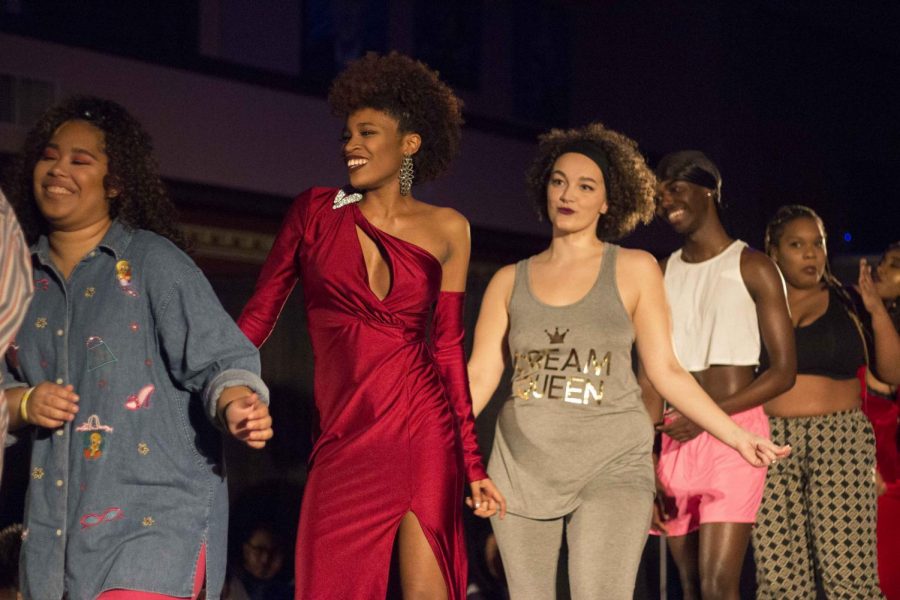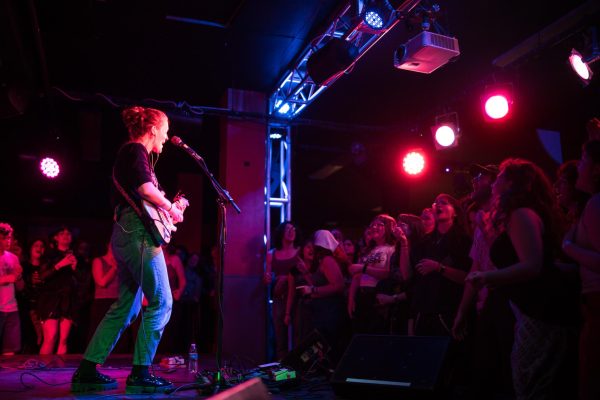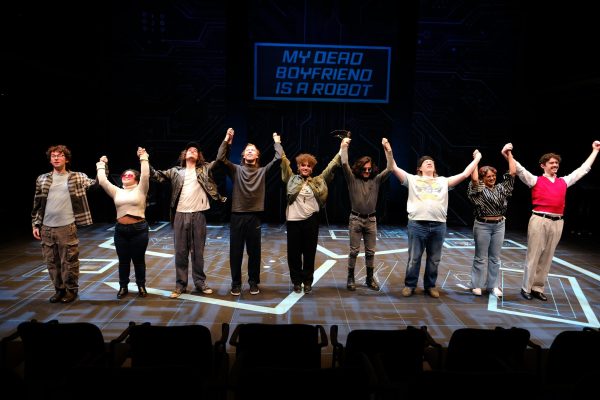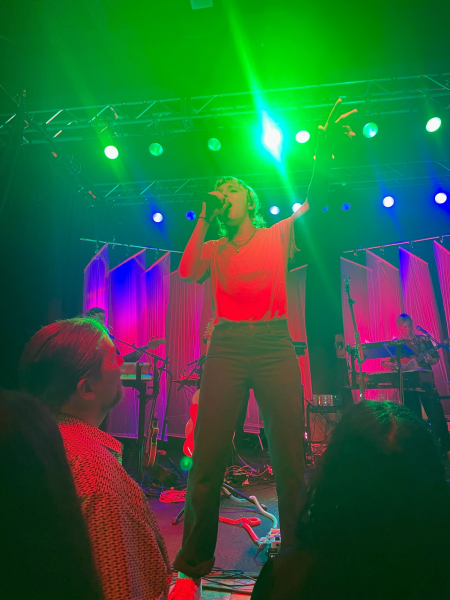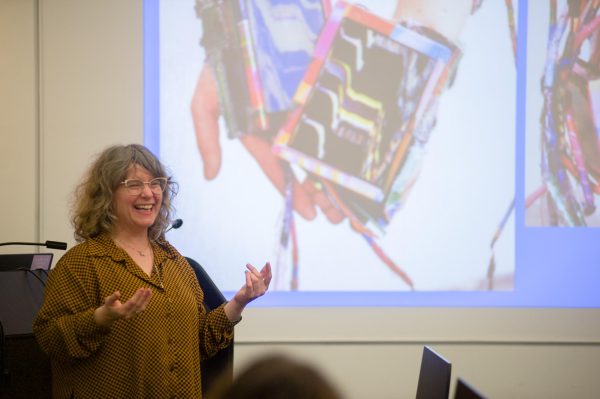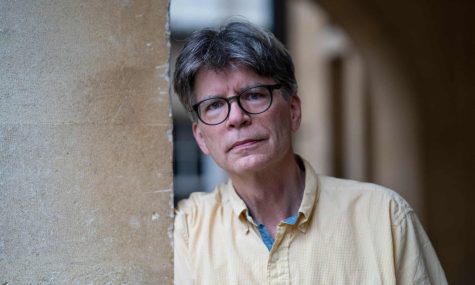BHM Fashion Show Celebrates Black Culture, Body Expression
Students in Black By Popular Demand: The Black History Month Fashion Show. From left to right: sophomore Nia Lewis, sophomore Mikaela Howard, junior Sage Petrone, first-year Deverrick McAllister, and sophomore Kristen Harris.
Black Oberlin student and faculty models took to the runway to showcase Black beauty and style in Black By Popular Demand: The Black History Month Fashion Show. This year’s show took place on Saturday, Feb. 23 in the Root Room of Carnegie Building.
Representing different themes — including ’90s, thrift, and formal wear — each featured collection focused on the many ways Black culture has permeated today’s popular media and mainstream styles. Each ensemble flowed differently, and each model posed with a bit of their own personal flair. The fashion show was a Black event, and the runway was full of affirmations. As models walked, the room filled with clapping, cheering, and proclamations of “OK!” and “Queen!” These inputs only further highlighted the many ways Black culture unites a space.
The show’s main goal was not only to celebrate Blackness, but also to create a culture of acceptance of all bodies. The various acts and stories incorporated multiple art forms into the space, and the event celebrated Black culture as a place of respect and beauty that calls attention to all parts of fashion and media.
“The mission of the show was to be an inclusive space, rejecting the norms and traditions of the fashion industry in regard to what the ‘model type’ looks like,” said College sophomore Jasmine Mitchell, who helped organize the event.
By not only showing Black beauty but also including a variety of styles, this show dismantled the traditional image of the high fashion model. In this way, the BHM fashion show fostered a culture of inclusivity that many fashion spaces have yet to create.
Many of the clothes at the fashion show were for sale through a silent auction. Event attendees could participate online by bidding on items as they were modeled on the runway. The auction proceeds benefited the Sickle Cell Association of Antigua and Barbuda, which supports patients with sickle cell anemia and their families. The organization also works to raise awareness about the condition, which makes it the perfect beneficiary for such a large-scale event.
College first-year Iesha Phillips beautifully summarized her experience walking the runway.
“Our show was filled with Black excellence and creativity,” she said. “The fashion show committee did a great job showing the diversity of Black clothing and hairstyles. Being involved in this event was an amazing choice. It helped me build community and support other Black students on this campus.”
As seen in the crowd, the event not only showcased looks on the runway, but also inspired attendees to don amazing outfits of their own.
The fashion show also celebrated Black music. Halfway through the event, double-degree sophomore Kopano Muhammad, accompanied by Conservatory junior Benjamin Oglesby-Davis, sang and invited the attendees to join and sing along as they walked up and down the runway, calling attention to the power and beauty of the space.
Later, event-goers were asked to stand and sing the Afrikan Heritage House song together, a call-and-response tune about the principles and meanings of Kwanzaa. Both of these activities drew the audience into the experience, creating a full narrative through which people could participate in the event.
Many students also felt the power of simply being in a space of Black excellence. Whoops and hollers erupted throughout the room in response to every look, effectively including all individuals in celebration.
“The show wasn’t even for me, because I’m a white lady, but it meant a lot for me personally to see all the different sized and shaped models,” said College first-year Mimi Hourihane, who attended the show.
The show’s mission and attention to Blackness created attendee appreciation, respect, and learning on multiple levels. This space made for an incredible mix of style, culture, and expression that was open for all.
“Simply put, the fashion show was reaffirming of how lit Black people are,” College seniors Jabree and Jubreel Hason said.
Agreed.


